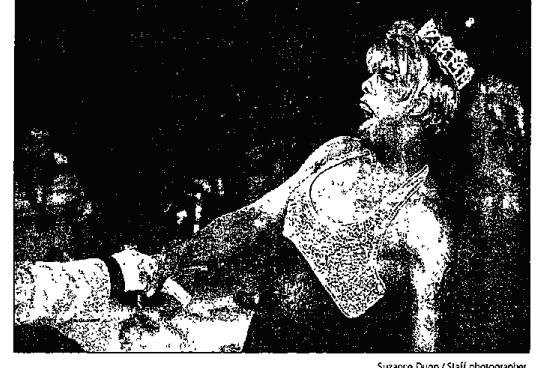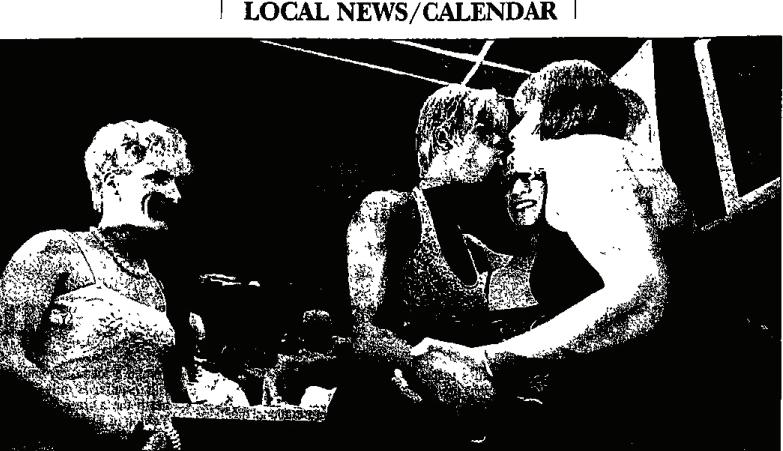
8 minute read
AND THEN THERE WERE FOUR
from Jerk May 2021
words by Car Shapiro photos from The Post-Standard And Then There Were Four Syracuse used to have a lively gay nightlife, but now there are only four gay bars in town. We explore what happened and where the community can be found if not at the bars.




Bar-hopping in Downtown Syracuse in search of the funkiest tunes and hottest guys was a favorite pastime for many young gay people in Syracuse in the 70s, but it also provided safety from the daily discrimination and harassment they faced. For closeted individuals, cruising was a more “anonymous” way to meet people and hookup, especially on Syracuse University’s campus. Surprisingly, Syracuse used to be home to a bustling queer nightlife scene, which may come as a shock given the lack of spaces available now. SU currently has Pride Union, the LGBTQ Resource Center, and the newly revamped LGBTQ-run magazine called The OutCrowd. Although there are a handful of queer spaces in the city, like CNY Pride and Sage Upstate, it seems like the queer nightlife scene does not in any way, shape, or form compare to what once was. “In the 1970s, there were upwards of 10 gay bars at one time in Syracuse; now there are a handful. You can’t help but to ask, ‘What happened?’,” said SU PhD candidate Sam Castleberry (he/him), who studies queer ethnography and theories of memory within mid-sized cities. Cissy Saloon, Orpheus, the Half Shell, and the Cat’s Meow were among the gay and lesbian bars that used to exist in Syracuse in the 70s, but now, there is barely any evidence of their existence apart from people’s memories. Currently, the gay bars in Syracuse include Trexx, Wunderbar, and Wolf’s Den. There used to be a fourth, Rain Lounge, but it closed down due to COVID and lost revenue. Technically, Syracuse Guerilla Bar, a 21+ pop-up networking and social gathering with a constantly-changing venue that remains a secret until the afternoon the day of, can be included, but there is still a huge difference between now and then, when gay and lesbian nightlife once thrived. “Gay bars were crucial for queer people in the 70s;





you had to go out to meet people at the bars if you wanted to experience intimacy,” said Greg (he/him), a 67-year-old gay man who grew up in Syracuse and attended SU. He was closeted as a teenager forcing him to seek out places where he could comfortably “be gay.” This journey led him to the several gay bars that used to sit on Warren Street near his job at the time. “I left work and walked three blocks around to avoid being seen going to the gay bar,” Greg said. A typical night for Greg, and many other queer teens in Syracuse in the 70s, involved bar-hopping down Warren Street and ending up at Ryan’s. He used to work as a bartender at Gotch Carr’s, a gay bar which got replaced by Steamboat, where underage teens got in by using older people’s ID cards (what a crazy concept). Before disco, bars offered 50 cent jukebox songs, but after the groovy genre became popular, everything changed. “People started hanging out where the music was better. Ryan’s was the hottest spot, people came from all over. All the hot guys were there; you wanted to end up at Ryan’s to close the night,” Greg reminisced.
Before Greg started going to bars, he got involved with the cruising scene in Syracuse. Cruising, for our more innocent readers, is a part of gay hookup culture where one goes “cruising” to find someone to hookup with – a quick fuck, if you will. Back in the day, there were known cruising spots in the city, such as the Thornden Park water tower, Onondaga Lake, and the Armory Square area. There were even some notable cruising spots on our very own campus, including the basement bathrooms of Maxwell and Bird as well as the restrooms of Machinery Hall.
Maxwell was the hottest spot in town. At the time, there were two bathrooms in the basement. The back bathroom had a glory hole and was notorious for orgies due to the lack of surrounding foot traffic. “It was out of the way, there was nothing else down



reason for the decline in cruising and gay bars is the emergence of the internet as a tool for queer education, connection, and activism. The amount of queer spaces has declined in combination with the stigma around being publicly queer. As a result, gay and queer people are able to take up more space in heteronormative culture. There are a few other catalysts for the changes experienced in queer nightlife some being the first being disco, which changed queer culture for the better. “Disco woke the world up to gay culture; the music started to merge straight and queer cultures as well as Black and white cultures,” there. There were two stalls and a urinal, with usually
Greg said. Another factor that affected gay culture 10 to 12 guys and someone watching the door,” said
but hurt bars was the HIV/AIDS epidemic, which Greg. The crowd included students and locals alike,
stole almost a whole generation’s worth of gay people. and signals, like a foot tap under the stall, were used
“I had to make all new friends as an adult because to indicate interest in
many of mine lost their a hookup. According "Gay bars were crucial for lives to the AIDS crisis in to Greg, you could slip under the stall for a queer people in the 70s; you the 80s,” said Greg. That being said, blowjob. had to go out to meet people uniquely queer spaces
Although gay cruising is still a thing, at the bars if you wanted to are still important. Jorge A Castillo (he/him) is the it is no longer as experience intimacy." director of the LGBTQ prominent, especially Resource Center at SU. on campus. Most queer people now head to Castillo says his motivation as director is seeing online sites or dating apps to partake in a newer queer students thrive despite any obstacles phenomenon, virtual cruising: Grindr, Growler, Men as well as providing a space for people to feel for Sex, Scruff, Adult Friend Finder, Man Hunt, Squirt, unconditionally welcomed and validated. The center Double List, and Brawl just to name a few. A big

has previously worked with Sage Upstate, a not-forprofit organization that promotes the well being of lesbian, gay, bisexual, transgender, and questioning people in Central New York as they age, to facilitate an intergenerational dinner for queer people of three different generations to meet and connect. “There is a lack of historical memory in the queer community and a lack of connection for queer elders. Creating a space to talk about struggles helps people find similarities; every queer generation struggles to find community,” said Castillo.
Junior Berri Wilmore (she/her) said she didn’t wonder about what the queer experience would be like here before she arrived, but once she became a student she realized the queer community was lacking. Wilmore also works at the LGBTQ Resource Center and plans events to connect the center to the student body.
“It’s isolating to be queer on campus, especially with COVID. I’m looking forward to more in-person events to help students connect to queer community and feel more comfortable on campus,” said Wilmore. She is also working on a project called The Elder Archives, which is an online archive of elder queer experiences in CNY. “Being queer out here [in Upstate New York] means something, and I wanted to help connect different generations of queer people since there is a gap in information,” Wilmore said. The lack of queer history in classrooms combined with the horrendous aftermath of the AIDS epidemic tore communities apart, making it hard for information to be passed down. It is imperative that younger generations learn that their experiences don’t exist in a vacuum, and although queer culture is changing and evolving, there are people out there with wisdom and experience that can be shared.
It seems that Syracuse will never have what it once had — a lively gay bar and crazy fun crusing scene — but that doesn’t mean queer people will cease to find spaces to connect with others safely. Whether it be online or in-person engagement, the queer community in the city and at SU are still striving to experience and make contributions to their areas, something so sacred and necessary for queer people to have.














